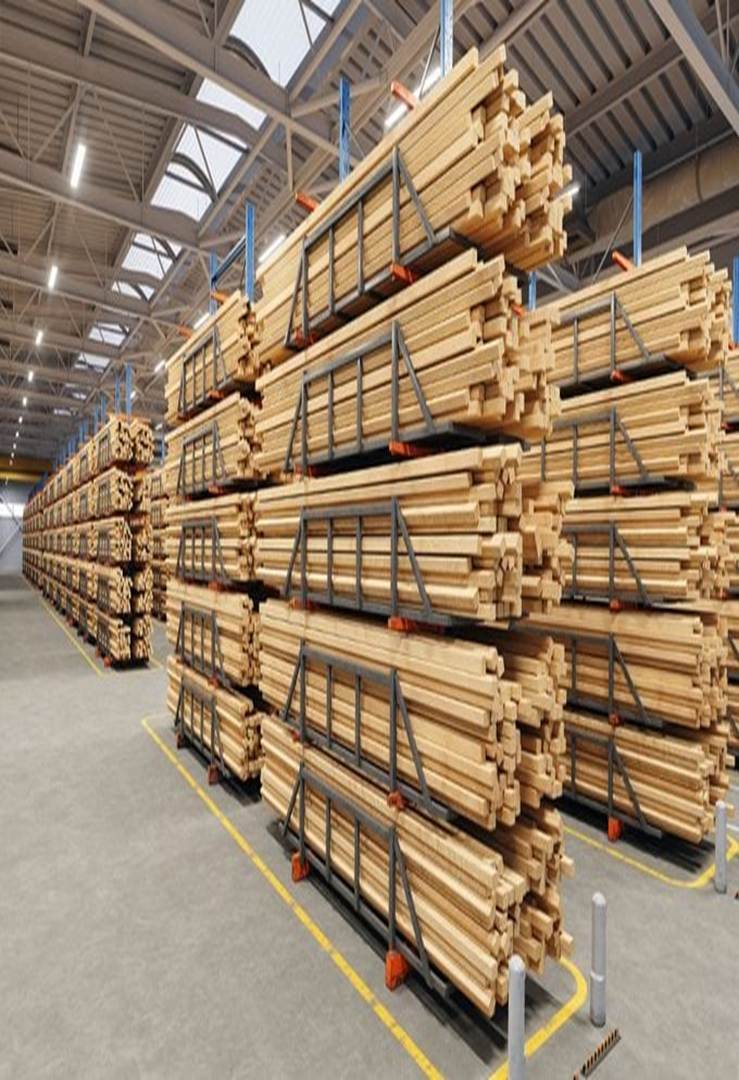The Reason So Much of America’s Lumber Comes From Canada
Remember when the price of lumber skyrocketed in 2020? It's poised to happen again.
We embarked
on a big remodeling project in early 2021, just as lumber prices soared to
all-time highs. Suddenly, 2x4s were selling for $16, when just a year before
they were less than $4. Luckily we only needed a handful of them, but had we
been building a whole house, it would have raised the costs so much that we
would have had to scrap the whole project.
Now that a
25% tariff on lumber from Canada is looming, will this cause crazy wood pricing
to return? To some extent, that is very probable, and here’s why.
Where
Does the US Get Its Lumber?
In 2024, our
country got about 72% of its lumber from its own forests. The rest was imported
from various countries, especially Canada, from which we purchased 28.1 million
cubic meters last year.
According to
the US Department of Commerce, Canada accounts for 84.3%
of all softwood lumber imports, followed by Germany (6.1%), Sweden (2.8%) and
Brazil (1.4%).
Why Does
the US Get So Much Of Its Lumber From Canada?
We rely on
lumber from Canada because the U.S. cannot supply enough softwood to meet its
own demand, and Canada is one of the largest softwood producers in the world.
While it
might be possible to switch to importing more lumber from other countries, none
has Canada’s large production capacity. Also, supply chains — especially for
lumber — are complex and costly to change, says Frederik Laleicke, an assistant
professor and wood products extension specialist at NC State University.
“Because
Canada directly borders the US, it is an integral part of the North American
construction material market,” he says. “Looking at the history of dimension
lumber, the industry has developed extremely efficient logistics for moving
logs from forests to construction sites, including harvesting, processing and
transportation.”
How Will
Tariffs On Canada Impact Lumber Cost?

As long as
demand for lumber doesn’t drop, a 25% tariff on Canada will likely make
lumber—and therefore new houses and renovations—more expensive since US
companies will raise the price of Canadian-sourced lumber to compensate for the
tariffs.
“We saw
something similar to these price troubles during the COVID-19 pandemic, during
which the supply of softwood lumber declined rapidly while demand remained
high,” says Laleicke. “That made softwood prices rise for a while, and it
wasn’t until after the supply grew again that prices dropped significantly.”
While
proponents of the tariffs say tariffs will encourage US companies to invest in
local production, economists warn that even if that happens, lumber prices will
rise. For example, North Carolina University’s College of
Natural Resources cites the 2006 US-Canada Softwood Lumber Agreement, which
allowed Canadian provinces to add tariffs to their US exports. While that
agreement was in effect (until 2015), us production did rise, while the US’s
import of Canadian softwood lumber dropped by nearly 8%. But, the savings
didn’t go to the builders and homebuyers. Instead, US producers gained $1.6
billion, while US consumers paid out an extra $2.3 billion for the deal.
How Will
Tariffs On Canada Impact Housing Costs?
Most of the
softwood lumber we get from Canada is used in residential and commercial
construction — and in 2023, 93% of new residential homes used softwood as
the primary building material — so tariffs on Canadian lumber would especially
impact the cost of new homes. According to the National Association of Home
Builders (NAHB), probably to the tune of 15%. In turn, that will ripple through
housing market, also raising the cost of existing home sales and rentals.
“Over the
past few years, new home prices have already skyrocketed in many markets due to
factors beyond just the cost of lumber, making homeownership increasingly
unaffordable for Millennials and Gen Z,” says Laleicke.
About the
Expert
- Frederik Laleicke is an assistant professor
and wood products extension
specialist at NC State University. He also teaches workshops about
the processing of wood, and regularly visits sawmills and wood products
companies in North Carolina and beyond.
Sources
- Softwood Lumber Subsidies Report to the Congress,
US Department of Commerce report, December, 2024.
- Navigating the US Housing Market: Positive Trends and
Regulatory Challenges, February, 2025
- USA with reduced softwood lumber imports in 2023,
September, 2023.
- Wood-Framed Home Share Decreased in 2023,
August, 2024.
- Framing Lumber Prices, NAHB, February, 2025.
- Will the US Lumber Market Thrive or Break Under Trump? NC
State Univesity College of Natural Resources report, January, 2025.
https://www.familyhandyman.com/article/why-does-us-get-lumber-from-canada/





Post a Comment